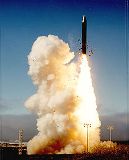Some 17 separate organizations unite to form the Intelligence Community (IC). Yet, the major media constantly reports, based on statements from the CIA (former head: John Brennan); the Office of the Director of National Intelligence (former head: James Clapper); FBI (former head: James Comey); and NSA (former head: Michael Hayden) that the entire “Intelligence Community” has determined that Russia interceded in the U. S. election.
Perhaps, a more legitimate accounting and factual reporting can be found in an article by Laura King in The Los Angeles Times (“Ex-Intelligence Chiefs Blast Trump Over Russia Comments," 11/13/17). Trump, in turn, described the ex-directors of the aforementioned intelligence agencies as “political hacks.” You will find that only four members of the IC adopted the conclusion – that Russia was the exclusive culprit – and that Clapper, Brennan, Comey and Hayden misrepresented the facts and created their own “fake media.”
 A NEW PLAN FOR A NORTH KOREAN WAR. David E. Sanger and William J. Broad of The New York Times reported: “Concerned that the missile defense system designed to protect American cities is insufficient by itself to deter a North Korean attack, the Trump administration is expanding its strategy to also try to stop Pyongyang’s missiles before they get far from Korean airspace.” (“Downing North Korean Missiles Is Hard. So The U. S. Is Experimenting,” David E. Sanger and William J. Broad, NY Times, 11/17/17) This is a radical new war strategy that can only petrify and already alarmed North Korean aggressor. At the same time, it is a potentially winning strategy that has the potential of nullifying North Korea’s bullying tactics in the Asian Peninsula.
A NEW PLAN FOR A NORTH KOREAN WAR. David E. Sanger and William J. Broad of The New York Times reported: “Concerned that the missile defense system designed to protect American cities is insufficient by itself to deter a North Korean attack, the Trump administration is expanding its strategy to also try to stop Pyongyang’s missiles before they get far from Korean airspace.” (“Downing North Korean Missiles Is Hard. So The U. S. Is Experimenting,” David E. Sanger and William J. Broad, NY Times, 11/17/17) This is a radical new war strategy that can only petrify and already alarmed North Korean aggressor. At the same time, it is a potentially winning strategy that has the potential of nullifying North Korea’s bullying tactics in the Asian Peninsula.
“The new approach, hinted at in an emergency request to Congress last week for $4 billion to deal with North Korea, envisions the stepped-up use of cyberweapons to interfere with the North’s control systems before missiles are launched, as well as drones and fighter jets to shoot them down moments after liftoff. The missile defense network on the West Coast would be expanded for use if everything else failed.
“For years, the single solution has been the missile batteries in Alaska and California that would target any long-range warheads fired toward the American mainland, trying to shoot them down as they re-enter the atmosphere. Such an approach, known as “hitting a bullet with a bullet,” remains of dubious effectiveness, even after more than $100 billion has been spent on the effort. Antimissile batteries on ships off the Korean coast and in South Korea protect against medium-range missiles, but not those aimed at American cities.
“In trial runs, conducted under ideal conditions, the interceptors in Alaska and California have failed half of the time. And the Pentagon has warned administration officials that the North will soon have enough long-range missiles to launch volleys of them, including decoys, making the problem far more complex.
“That helps explain the rush for new protections.” (“Downing North Korean Missiles Is Hard. So The U. S. Is Experimenting,” David E. Sanger and William J. Broad, NY Times, 11/17/17)



